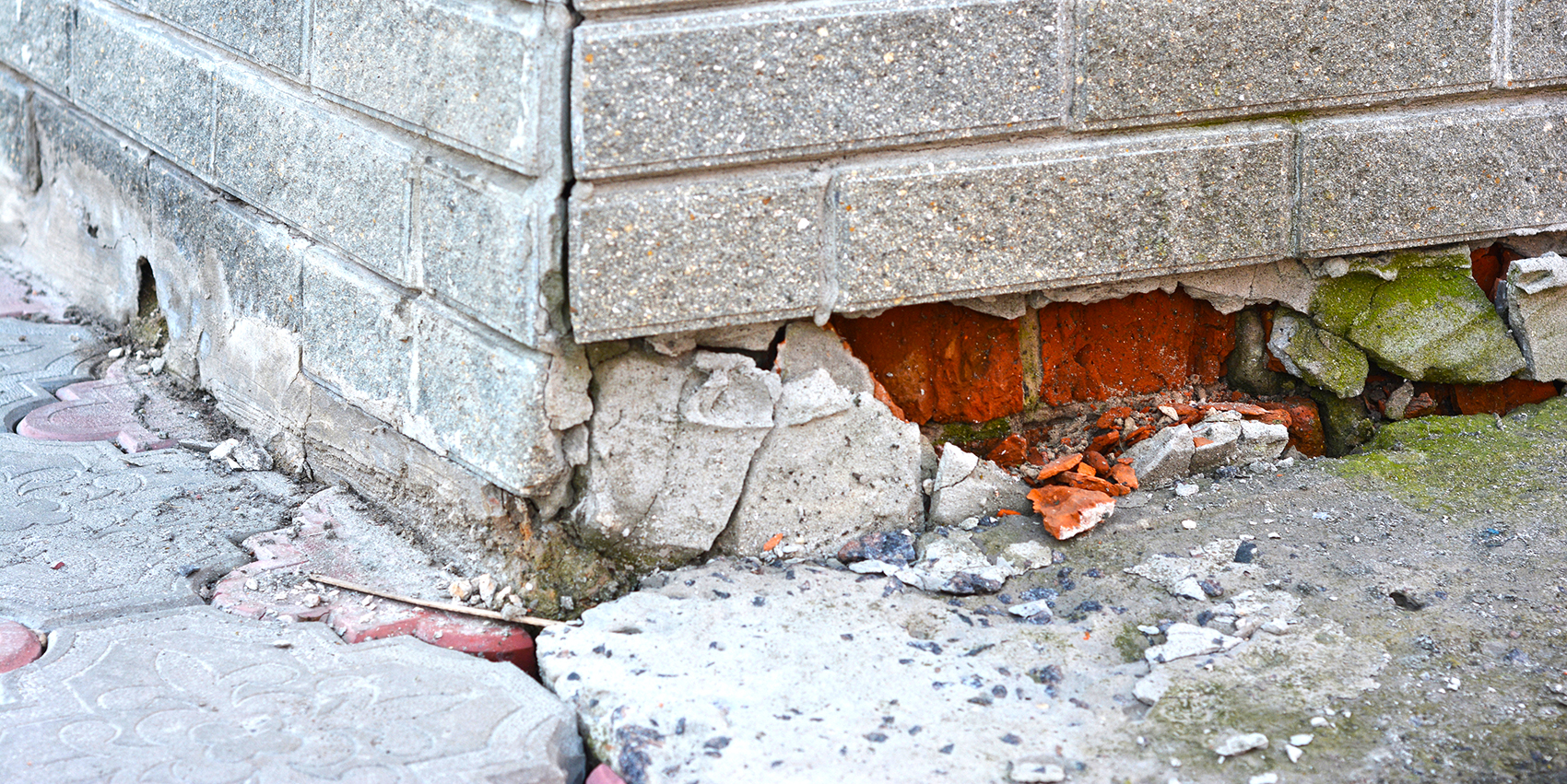
Many foundation problems are the result of changes to the soil surrounding your foundation. Most of the time, these problems will not improve with time – they will only become worse! Even new homes can suffer from compromised foundations. Consumer Reports found that 15% of new homes had serious foundation problems – most of them the result of shifting soil or poor construction techniques.
Most foundation difficulties are the result of one of these causes:
- Poor construction techniques
- Home built on shifting or poorly compacted soil
- Soil expansion damaging the home
- Deteriorating or inadequate support systems
Whether your home is older or new, there may be serious problems lurking in your foundation. When you decide to fix these problems – permanently – you make an investment in your home that makes dollars and sense.
Should You Attempt to Repair Your Foundation Yourself?
It isn’t unusual for handy homeowners to attempt to apply do-it-yourself solutions to a serious foundation problem. However, these quick-fix attempts to resolve the damage caused by the majority of foundation problems will not work. One of the most common repairs attempted by homeowners is patching cracks in their drywall.
This quick-fix might cover the evidence of the problem and provide a temporary solution to the cosmetic damage, but it will not have any effect on the genesis of the problem – the faulty foundation. This stopgap measure will not prevent the cracks from recurring many times over. The continued patching and re-patching of drywall is time consuming and can lead to uneven and unattractive drywall.
Tuckpointing exterior cracks is another common temporary measure that homeowners will do on their own. This too is only a stopgap measure, as the cracks will recur unless the root problem at the foundation level is addressed. Multiple attempts at tuckpointing often result in the use of different colors of mortar, which presents a disjointed appearance, detracting from pleasing appearance and solid resale value of your home.
Foundation Repair Can Produce Increased Return of Investment on Your Home
It is always important to keep the resale value of your home in mind, since most people do not live in the same home for their entire lives. If you were shopping for a home right now, you would be reluctant to buy a home with structural problems. If you decided that you wanted to pursue the home anyway, you would most certainly ask for a substantial discount on the asking price to offset the costs involved in restoring the stability of the building.
When a house is going to be sold, the Real Estate Seller Disclosure Act requires that information pertaining to any foundation problems must be provided to potential buyers. If you poll realtors in your area, you will find that they must discount a home with foundation problems by at least 10 to 20% to close the sale of the home. If you look at the value of your home in the current market, you can see that by ignoring yourfoundation problems, it’s will cost you a significant amount when you sell your home.
When is the Best Time to Repair Your Foundation?
It is common for homeowners to ask, “Do I need to address this problem now? Can’t I just wait until I’m ready to sell my home to have it repaired?” There is one simple answer to this question. When you are living every day with a foundation defect, you can’t utilize your living space fully and enjoy the comforts of home without worry. You never know when the problem will worsen and cause irrevocable damage, requiring you to move either temporarily or permanently from your home. Also, any finish work that is added to the structure will need to be repaired over and over until the problem is addressed. This can become expensive and frustrating.
The issue of a defective foundation is serious, and must be addressed. It is always best to handle foundation problems early, before they become more involved and more expensive to repair. If you fix these problems now, you can rest easy, knowing your most important investment is safe, secure and fully functional.
